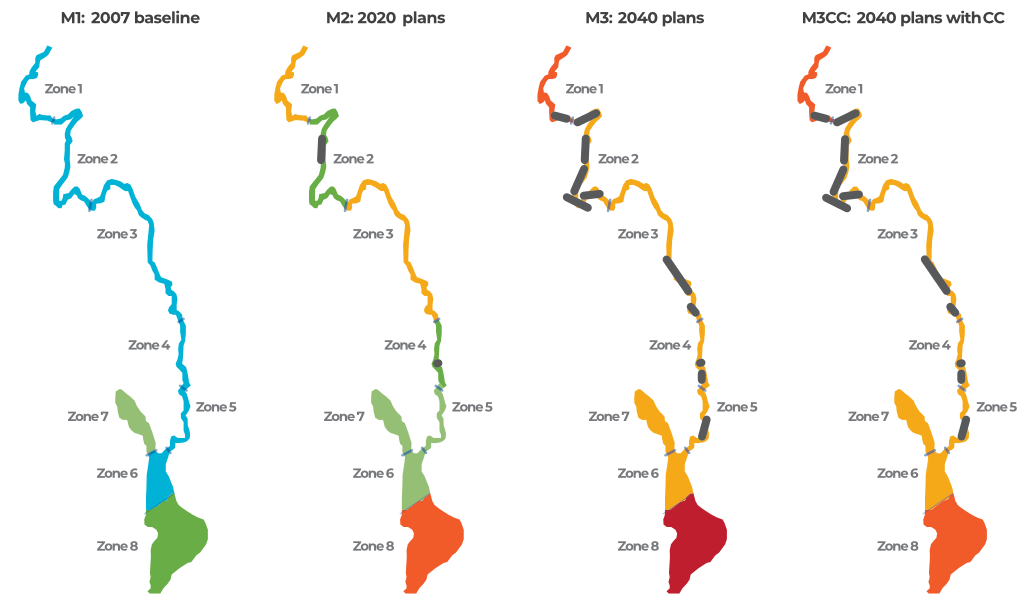Environmental assessments
This page presents findings on predicted changes in annual sediment loads, costs for additional river embankments, and changes in the overall ecosystem conditions and fish biomass in the LMB.
↓ Scroll down to view details
Note: The selected findings presented here should be interpreted considering the assumptions, methodologies and data sources of the Council Study. For complete assessments, consult the Council Study reports.
Sediment
Comparison of annual sediment load from the Mekong catchments with the annual sediment load reaching the Mekong Delta
An opposing dynamic takes place in the Mekong regarding sediment input and transport downstream. On the one hand, total sediment loads entering the Mekong River under the 2020 and 2040 scenarios may increase due to land use changes (blue bars). On the other hand, there may be a drastic reduction in the amount of sediments actually transported downstream towards the Mekong Delta due to trapping in the growing numbers of dams (green bars). Mitigation measures may partially reduce this trend. Other factors such as sand mining have not been considered due to data limitations.
User guidance: You can interact with the chart by clicking on the legend fields or moving the cursor over the bars.
User guidance: You can interact with the chart by clicking on the legend fields or moving the cursor over the bars.
Bank protection
Costs for additional river embankments
Erosion, mainly resulting from hydropower development, causes higher expenditures in river embankments. Some lengths of the Mekong River have already been protected (about 56% in Thailand, 23% in Lao PDR, 3% in Viet Nam and 1% in Cambodia) but planned hydropower projects would require additional investments. Costs for additional river embankments would distribute unevenly among LMB countries. For 2020 plans, costs in the amount of $866 million are predicted. Thailand would expect the highest share for 2020 plans followed by Lao PDR. 2040 plans would require an estimated $5.67 billion in investments in riverbank protection, majorly in Viet Nam and Cambodia.
Ecosystem conditions
Overall ecosystem conditions across different scenarios
The riverine ecosystem health of the LMB is predicted to decline through the development sequence: from the 2007 baseline when most parts of the river are in a Category B condition, to a mostly Category C condition for the 2020 scenario, and a mostly Category D condition for the 2040 scenarios with and without climate change.


User guidance: You can interact with the chart by clicking on the legend fields or moving the cursor over the bars.
Fish biomass
Change in fish biomass in the Mekong corridor of the LMB
Overall, fish biomass is anticipated to decline under 2020 and 2040 scenarios, especially in the upper part of the LMB, and in particular white fish, the biggest contributor to fish biomass in the LMB. However, changing environments, such as reservoirs, are expected to increase generalist and non-native fish.